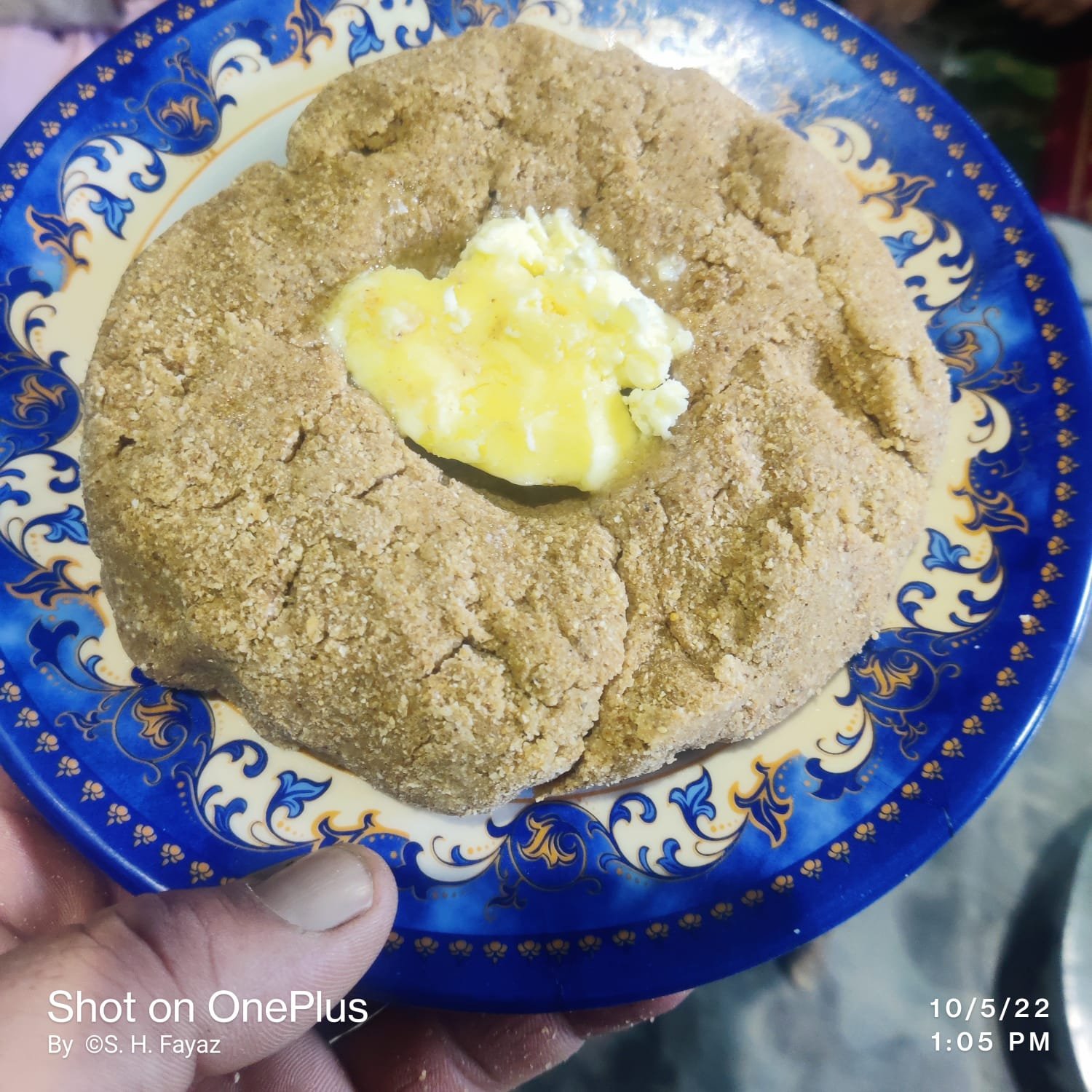What Naked Barley Farming Can Teach Us in An Era of Climate Change

Naked barley has properties that promote adaptability to the harsh extremes of a cold desert like Kargil. There is also a lot that we can learn from the cultivation of this ancient grain in a world that is grappling with increasing resource constraints.
The casual visitor from tropical India, so used to an abundance of green, is struck by the aridity of Kargil’s desert landscape. Vast mountains devoid of tree cover loom over slim bands of green along tributaries of the Indus. It seems incredible, at first glance, that this ecosystem could sustain life, let alone a people with a generosity that might suggest a fertile land with abundant produce to share.
Like many desert environments, Kargil is a land of extremes. Temperatures range from a low of -50°C in the winter to a high of 38.4°C in the summer. It has a short growing season of 5 months and average annual rainfall of 337 mm. Out of a total area of roughly 14000 sq. km, only 117 sq. km is cultivated. Despite this, it has been self-sufficient for most of its history.
A Supercharged Form of Barley
Nature is bountiful in ways that are not always evident to human sensibilities. It is true that Kargil’s harsh environment limits the local diet to a few key sources of nutrition, primarily nes or naked barley (scientific name: Hordeum vulgare). Lack of quantity does not mean a lack of quality, however.
Naked barley is a supercharged form of barley. The hull falls off during harvest—hence the term ‘naked’. In other forms of covered barley, the hull is removed in a process called pearling, which takes away much of the nutrient-rich bran. By contrast, naked barley is a whole grain.
Naked Barley Mentioned in Ancient Texts
The texts of Sowa Rigpa, which is a system of medicine indigenous to the region, extol the many virtues of naked barley, according to Dr. Padma Gurmet, director of the National Institute of Sowa Rigpa. Ancient wisdom is corroborated by modern nutritional science, according to which naked barley has an optimum level of beta-glucan, a soluble dietary fibre that lowers cholesterol, aids digestion and has significant anti-diabetic properties.
In Kargili folk wisdom, consumption of naked barley promotes adaptability to the harsh extremes of a cold desert. In the summer, after the hard labor of planting and harvest, a paste made from barley is applied to the lips to cool down the body more effectively than a drink of water (not so easy to come by in a desert). And in the winter, barley tea is drunk in copious amounts to ward off the bitter cold. Naked barley has anti-inflammatory and cooling properties that are useful in the hot dry summers and immunity-boosting properties that help in winter.
History of Naked Barley
Naked barley is an ancient grain, having been around for 10,000 years, the result of a natural mutation that was selected at the dawn of agriculture. In recent years, with advances in evolutionary and population genetics, scientists can trace its geographical origin, which they place between the fertile crescent in Southwest Asia and the Qinghai plateau in Tibet. They posit that different cultivars of barley developed alongside the movement of peoples on the ancient Silk Road, on which Kargil was an entrepôt. Before rice and wheat became unanimous with subcontinental cuisines, naked barley was a staple in the diet of the ancient Harrapan and Indus valley civilisations. Even today, in the Drogba villages of Kargil’s Aryan valley, sun-dappled bundles of the harvested grain are laid out to dry under the midday sun, much as they have been for millennia.
Papa, a dish made from naked barley
Naked barley is a crop that requires relatively little water, an important consideration in a cold desert. Irrigation of barley fields is done on a rotational basis, regulated by the villagers to ensure equitable distribution of scarce water. Farmers also pool their labor to plough the soil, helping each other out as needed, in a system called milak. This co-operative spirit continues to infuse Kargil’s agriculture despite the introduction of modern technology. The story of naked barley in Kargil is the story of making a lot from little, and thus holds lessons for a world grappling with increasing resource constraints in an era of rapid climate change.
In the same spirit, we would like to share a barley recipe from Kargil’s kitchens, where barley is used in its flour form. After the grain is harvested in October, it is washed, picked through, sun dried and roasted on a metal pan. Only then is it taken to the flour mill. The barley flour is collected in bags and stored at home, where it can be used all year round.
Catarrh and chilblains are no match for thuksing, an immunity-boosting stew of barley and black pepper from the faraway lands of the tropical south.
Recipe: Thuksing
Ingredients
500 g mutton, chopped for stew
1 onion, chopped into small pieces
4-5 cloves of garlic
1 tbsp ginger-garlic paste
Black pepper
Oil for cooking
1/2k g roasted barley (tsampa)
Method
Fry the onions for two minutes, then add the ginger-garlic paste, and pepper.
Add the mutton pieces and garlic and fry for a few minutes.
Add 2-3 cups of water and bring to boil.
Add a small amount of tsampa according to the thickness you desire. (Thuksing is usually of a soup-like consistency).
Boil for 8-10 minutes.
The thuksing is ready to be served.
Shabir Hussain Fayaz and Madhavi Peters Esq. are the deputy director and founder, respectively, of The Tropicalist Trust in Kargil, a non-profit that works for sustainable and place-based development.
ALSO ON THE GOYA JOURNAL








